After centuries of shifting symbolism and social stigma, pink has once again become a popular shade for men, bringing with it a new layer of subversive meaning. Sarah Magliocco writes about this new trend.
You can learn a lot from colour. From a zebra's monochrome stripes to confuse predators, to a ladybird’s red shell to warn of the poison within, colours act as a dialogue in ecosystems where linguistics are not understood from one species to another. And what species is less understood - and more in demand right now - than fashionable emo boys?
You might have seen them on red carpets of late: Travis Barker, Machine Gun Kelly, the Kid LAROI, stars who previously existed on the periphery are now front and centre in Balenciaga, Dolce & Gabbana and more. And what are they wearing? Pink.
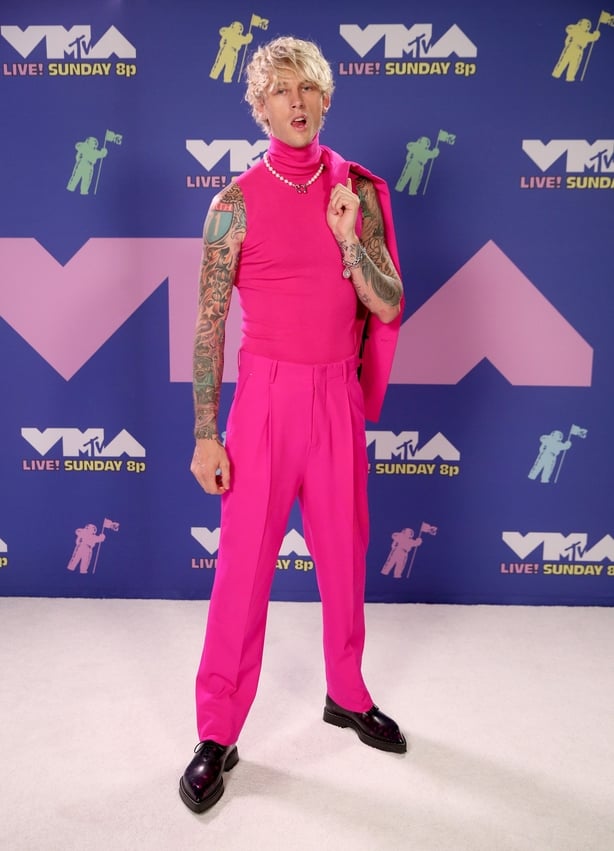
And they’re not alone.
Men have been turning to the shade in their droves in recent months, with male celebrities leading the charge when it comes to embracing the rosy hue. Flipping through a magazine or browsing on Instagram, it’s a scroll-stopping moment to see a guy in a historically feminine shade.
It makes us consider what it means to be a man now in a time where many of the stereotypes of traditional gender norms are being redefined.
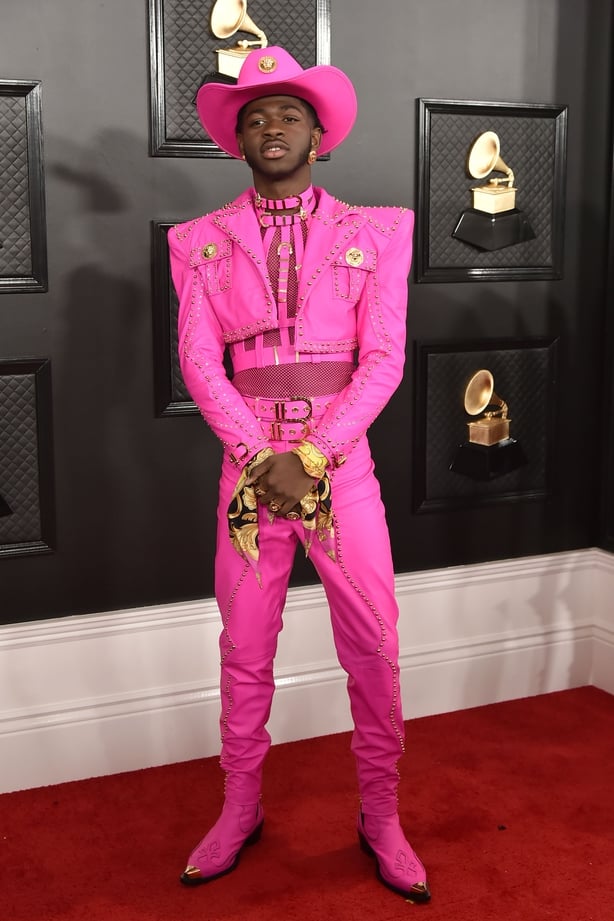
Lil Nas X made headlines when he turned up to the 2020 Grammys in a hot pink cowboy ensemble, while in 2019, Harry Styles committed to the colour fully by featuring it heavily on his hotly anticipated album cover for Fine Lines, wearing a pink shirt along with his suit trousers.
Rapper Machine Gun Kelly has adopted pink into his wardrobe for quite a while, choosing hot pink suits patterned with roses and dyeing his hair powder pink as he embarks on his very public and passionate courtship with actress Megan Fox.
Kourtney Kardashian and husband Travis Barker, the Hollywood it-couple who are currently gorging themselves on paparazzi interest and softcore PDA, hit the headlines when Travis wore a fuschia pink knee-length coat on the red carpet at the 2022 Grammy Awards in Las Vegas in April.
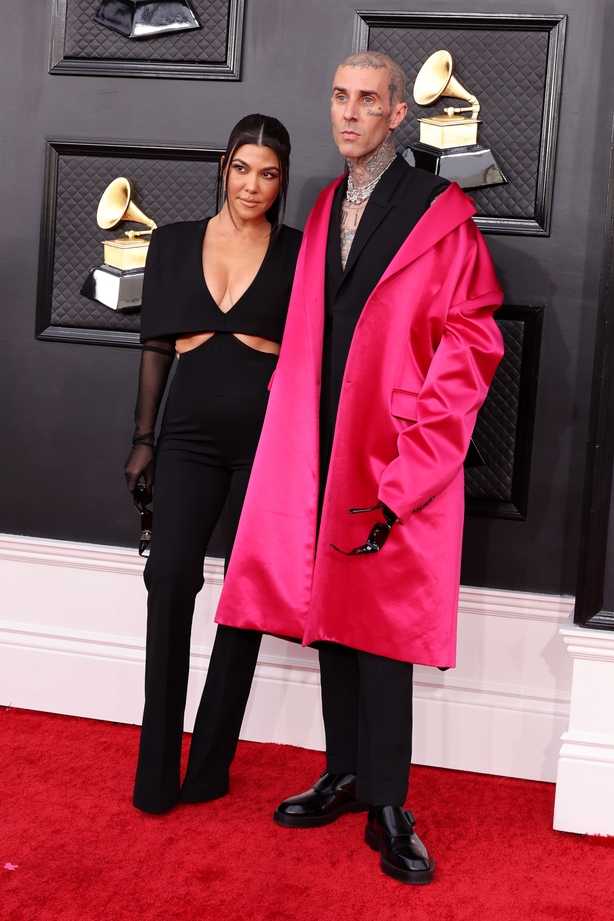
More will come, as Valentino's creative director Pierpaolo Piccioli crafted a waft of pink designs for the brand's A/W 2023 line.
Fresh off his turn as hyper-masculine Tommy Lee in Pam and Tommy, Sebastian Stan countered this image by walking the Met Gala 2022 red carpet in a full pink ensemble by the fashion house.
These moments and more made waves in the Twitter-verse, as the use of pink on these traditional masculine garments had a subversive undertone, flipping the gendered idea we have of pink on its head.
We have attached emotional and symbolic meaning to colours for centuries, notably in the idea that certain colours should only be worn by one gender or another. Blue has long been associated with boys and pink with girls.
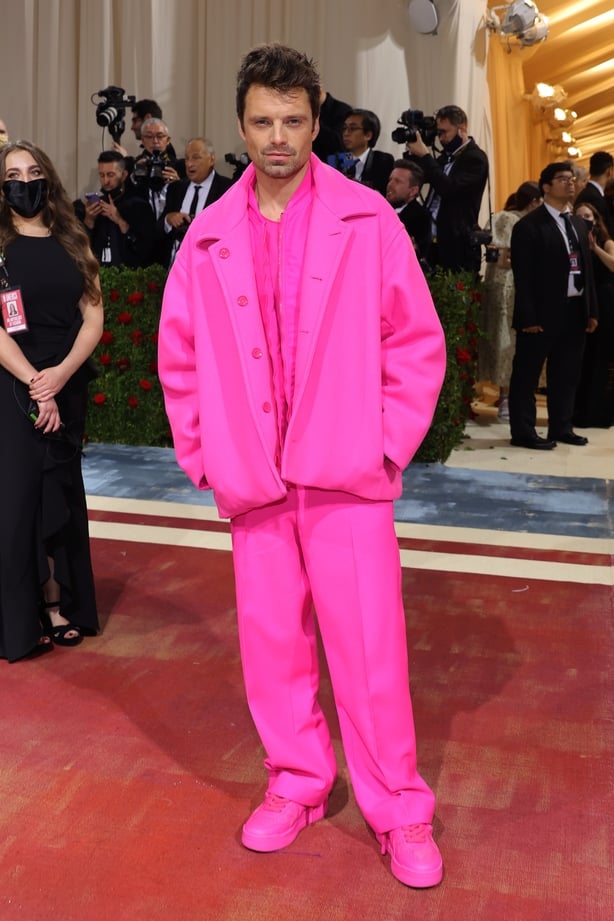
This concept doesn’t take into consideration the many nuances of gender, but gender reveal parties still go viral on our TikTok and Instagram feed everyday, with pink or blue confetti always giving the game away.
This wasn't always the case. Back in the 1800s, pink was considered a fashionable shade for men, thought of as a derivative of red that symbolises strength and emblemised the pink, rosy cheeks that come along with youth and good health.
The hue only became divided along the gender binary as the result of marketing campaigns in the 19th and early 20th century to help clothing companies sell more children's clothes. Gendering shades went out of fashion in the 60s and 70s, but came back with a boom in the late 80s and early 90s, coinciding with the development on pre-natal sex screening.
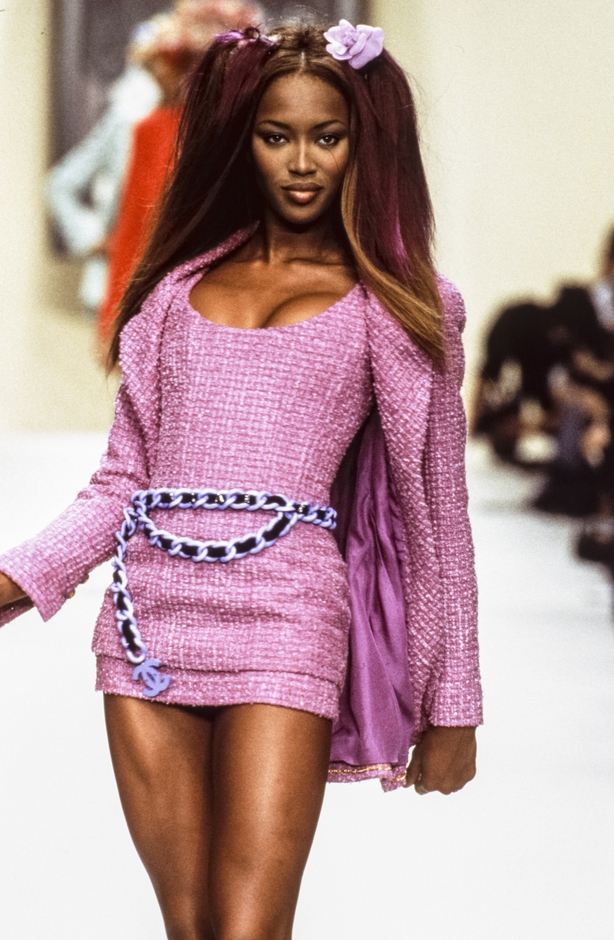
Pink returned with a vengeance as the almost exclusive uniform for the institution of womanhood. As the 90s approached, high fashion houses like Versace and Chanel began featuring pink more prominently in their collections. The shade names used were peppered with hints at how women's bodies were commodified – Barbie pink, Hot pink, Baby pink.
In the 2010s we saw pink change how it could define women, as the era of Millennial pink reared its head as the "girlboss" culture was born. No more was pink relegated to act as the hallmark of sex appeal or diligent domestic peonage.
Instead Millennial pink was the colour of choice for an entrepreneur’s velvet sofa or an influencer’s office stationary collection – gently feminine while exploiting the benefits of capitalism. Soft assertiveness, wrapped with a pink bow so as not to be too disruptive to the hallowed halls of the boys' club of corporate success.
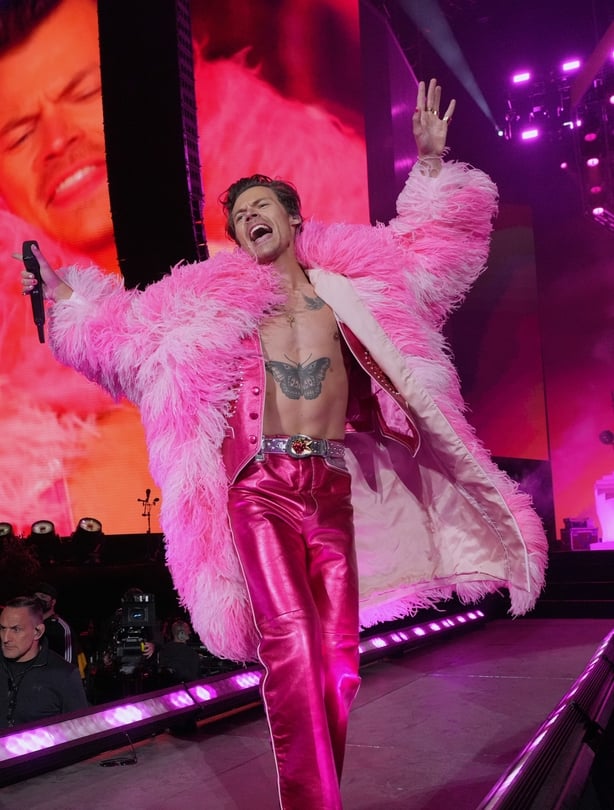
According to colour expert and divine feminine coach Marcia O’Reagan, these pink choices by men in the media are not accidental, and are symbolic of a cultural change that has been brewing for quite a while.
"I feel with Covid, it has got people to ask the question, 'How am I living my life, and do I love it?’ On an unconscious level people are searching for more love in their daily lives, and are being drawn more to pink, and changing the norm of the association with wearing pink," she said.
"I think what we are seeing here is that the norm is no longer the norm, and we all need a leader to show us that what we thought to be true is not true."
Celebrity men are currently parading their new found love of pink, but they are far from the first people to use pink in a groundbreaking way – the queer community has been doing so for decades and still influences how fashion can be a tool for disruption and change.
It’s a different take to how we have seen it adapted previously. In preppy style tribes, men often wore pale yellows and pinks.
However, Marcia believes that the new rise of statement pink on red carpets is a nod to bravery, a move away from the fear that gripped the world through the pandemic, and the fear of being emotionally vulnerable, a stereotype that has historically plagued male-identifying people.
"We have a fantastic opportunity here in the time that we are in, to do things differently and do things that have not been done before. The people wearing those different colours, it's a statement saying ‘we can do this another way'. It’s an awakening, it evokes something in someone to say I can do that too, because we are all here to inspire each other," she explained.
"It’s okay to take on roles that are different."
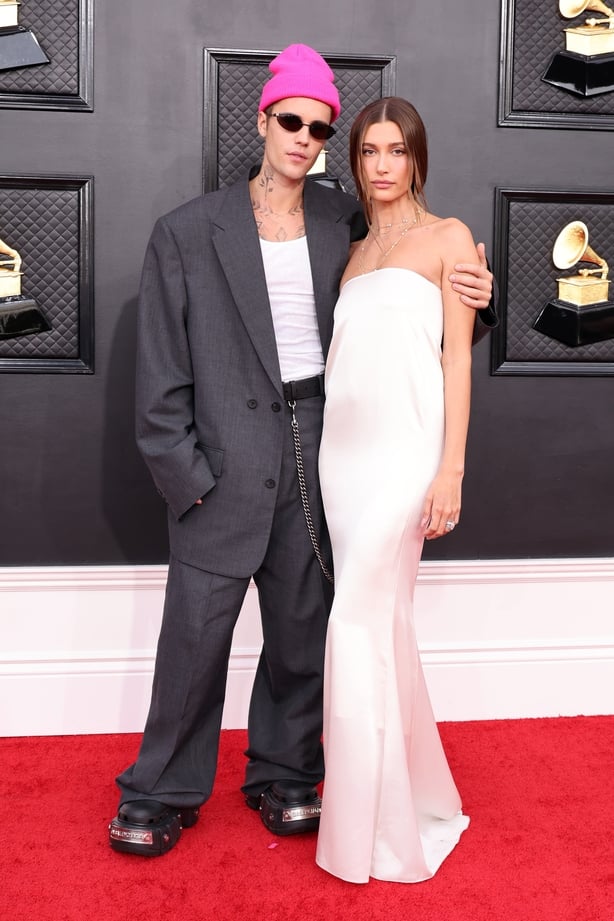
"Your decisions and actions are going to be very different when you’re not coming from fear. Pink is a great colour to have when someone is in fear, because it dispels fear and anger in a very soft way."
This fear-melting property of pink is well documented, after psychologists in the 1980s smothered the walls of jail-house "drunk tanks" a bright pink, and noticed an obvious change in levels of aggression and hostility.
As we emerge from a place of global fear and uncertainty, the adaptation of pink by fashion houses and celebrity showmen seems like a natural call. It’s a move away from emergency times when the lurid yellow of hazmat suits and sterile blue of nitrile gloves caused mental alarm bells to ring on sight.

The soft, energetic, romantic, idealistic and loving psychological impacts of pink are comforting after a time of strife, when survival is no longer the focus and we can sway softly back into the routines of our lives as they were before 2020, rose-tinted glasses in hand.


